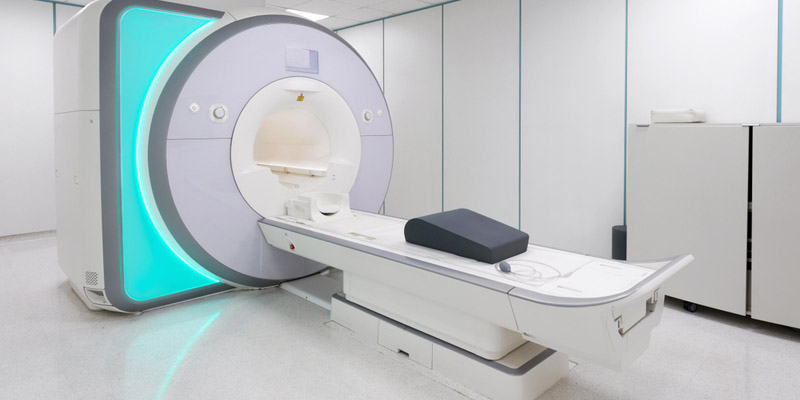
Positron emission tomography – magnetic resonance imaging (PET-MRI) can be considered as a hybrid imaging technology. It includes MRI soft tissue morphological imaging and positron emission tomography functional imaging.
At present, the integration of positron emission tomography (PET) and magnetic resonance imaging (MRI) as a hybrid imaging methodology is getting incredible consideration in its rising clinical applications as well as in the preclinical field. A few designs based on various unique kinds of PET detector innovations have been created in the last few years. Some of which have been utilized for first preclinical studies.
A few organizations offer MR-compatible preclinical PET scanner inserts for use in the bore of a current MRI, empowering synchronous PET/MR picture acquisition.
The initial two clinical entire body PET-MRI frameworks were introduced by Philips at Mount Sinai Medical Center in the United States and Geneva University Hospital in Switzerland, in 2010. The framework included a PET and MRI scanner separated by a spinning bed. Siemens was the principal organization to offer concurrent PET/MR acquisitions, with the main frameworks introduced in 2010 dependent on avalanche photodiode detectors.
On sixteenth February 2013, Apollo Hospitals introduced the first PET-MRI in South Asia. PET-MRI was introduced at Indraprastha Apollo Hospitals by the Chief Minister of Delhi, Smt. Sheila Dikshit and is a facility facilitated by the House of Diagnostics.
Presently Siemens and GE are the main organizations to offer a completely coordinated entire body and synchronous acquisition PET-MRI framework. The Siemens framework (Biograph MMR) got a CE mark and FDA approval for client purchase in 2011.
In the brain PET-MRI industry, traditional PET-MRI holds a dominant position due to the growing development of these tools by the manufacturers. Different leading manufacturers such as Siemens Healthcare, GE Healthcare, and Bruker have produced traditional brain PET-MRI systems that take helium to cool the magnet. The use of helium in these MRI tools further complex its functionality and develops various kinds of issues during its installation.
Helium-free PET-MRI systems are growing significantly in the application in the upcoming years. The cost of helium gets canceled during the development and use of these instruments. It is expected to positively affect its adoption rate across various segments. To solve various issues related to traditional brain PET-MRI systems, leading manufacturers are focusing on enhancing the development of PET-MRI systems that are free of helium. Various manufacturers are focusing on developing helium-free MRI machines. It can be integrated with PET to create a helium-free PET-MRI machine.
Strengths of integrated PET-MRI, when contrasted with traditional imaging techniques, are many. Some of them are listed below:
Integrated PET-MRI innovation has some disadvantages also when we compare it with other conventional hybrid imaging technologies. Some of the limitations are below:
1. Integrated PET-MRI has significant applications in oncology. It permits high-resolution imaging of the four key steps in malignancy formation viz., apoptosis resistance, cancer angiogenesis, tumor multiplication, and cancer metastasis.
2. PET-MRI has its usage in a few key clinical and research applications in fields, for example, neurology and cardiology.
3. Integrated PET-MRI imaging modality empowers multifunctional and anatomical imaging simultaneously in small animals, which incredibly impacts biomedical imaging in research and clinical settings.
PET/MRI delivers the powerful for 'all in one resource' combination of anatomical, metabolic, and molecular imaging, which ends up being superior to PET/CT or independent PET framework. The post information acquisition including attenuation correction and reconstruction methods is not adequate to infer to the ideal outcomes from it. Moreover, the shortcomings of the current framework should approach with splendid ideas to outline a better framework. The evolvement of PET/MR has applications in the field of Neuroscience, Oncology, Musculoskeletal, and so on, hence, ending up being a frontier in the period of integral hybrid imaging. However, it additionally requires further research on the different utilizations of PET/MRI for pre-clinical and clinical trials. The Global Brain PET-MRI Systems Market size is expected to rise at a market growth of 7.8% CAGR during the forecast period.